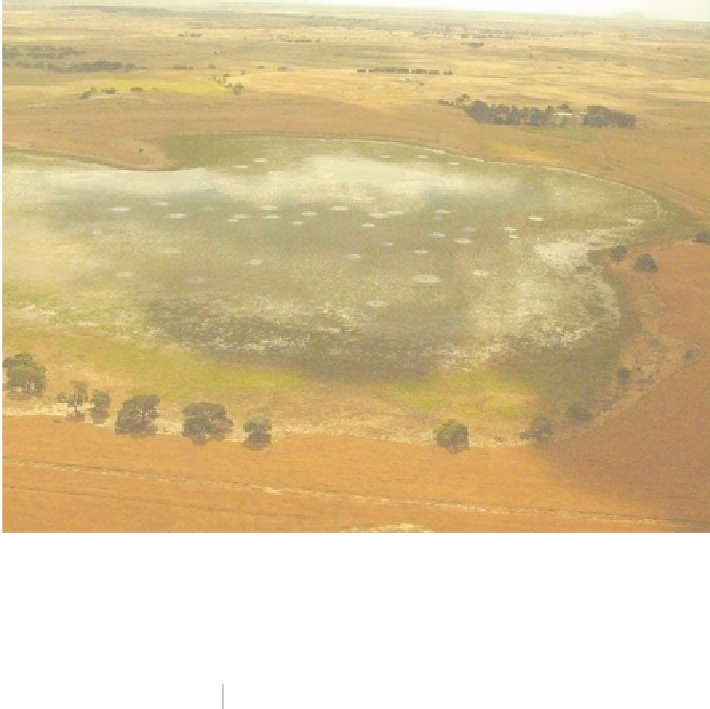Environmental Engineering Reference
In-Depth Information
Fig. 3
Nestsites(speciesunknown)appearascircularareasclearedofvegetationwithinwetlands
whenobservedfromtheair(Photo©2010EcologyandHeritagePartners)
Table 1
Effectiveness of aerial surveys, and subsequent ground-truthing, for detecting brolga
nests in south-west Victoria
Ground-truthing of nests identified by air
Brolga Black swan Old/abandoned nests
a
Notassessed
b
44 9 14 6 15
a
Neststhatdidnothaveeitherbrolgasorblackswansatthenestcouldnotbereliablyattributedto
a species, and were considered to be either nests from the previous season or a nesting attempt of
the current season that had already been abandoned
b
Some nests were not assessed, that is not visited, due to no access being available to the site at the
time of ground-truthing or the site being outside the area of interest (i.e. more than 10 km from the
wind farm boundary)
Numberofnestsidentiied
duringlight
of survey transect. A total of 815.5 km
2
was searched over the 3 days. A total of 44
nestswereidentiiedasbeingpositiveorpotentialbrolganestsites(Fig.
3
, Table
1
).
Ground-Truthing
Of the 44 nests identified from the air, ground-truthing showed that nine of these
were brolga nests, while 14 were nests of black swan (Table
1
). Six further nests
were abandoned (that is neither brolga or black swan were present when visited),












